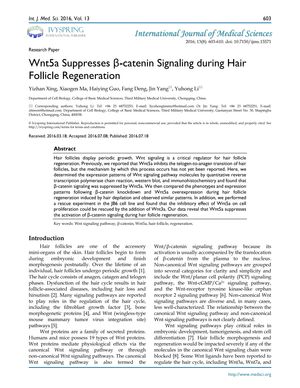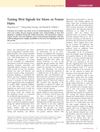Wnt5a Suppresses β-Catenin Signaling During Hair Follicle Regeneration
January 2016
in “
International Journal of Medical Sciences
”

TLDR Wnt5a slows down hair growth by blocking a specific pathway during hair regeneration.
The study found that Wnt5a suppresses the activation of the canonical Wnt/β-catenin signaling pathway during hair follicle regeneration, inhibiting hair growth. The study used experiments on mice to demonstrate this, and suggests that Wnt5a could be a potential target for hair loss treatments. The study also found that the canonical Wnt signaling pathway is necessary for hair follicle regeneration.





